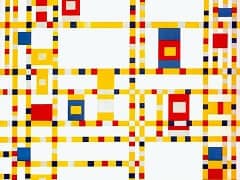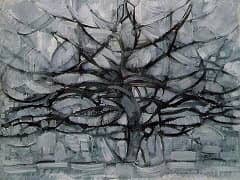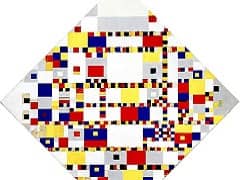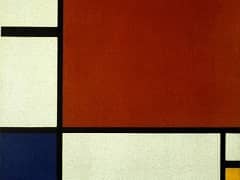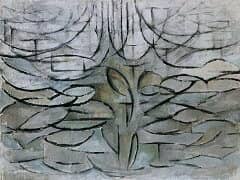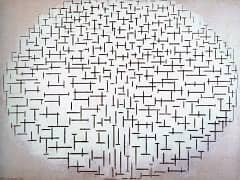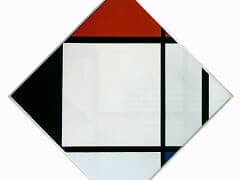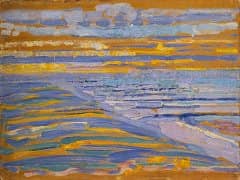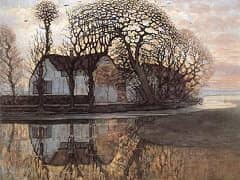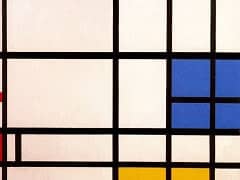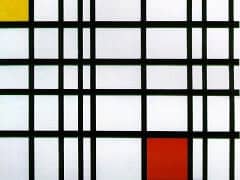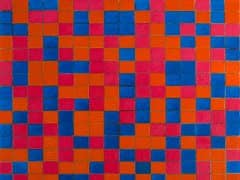Tree II, 1912 by Piet Mondrian

Mondrian was a great painter capable of transforming the surface of the canvas into a precious artifact as regards richness of texture, combinations of color, and dynamic balancing of the composition. It is essential to see the original works in order to appreciate all their beauty. His aim in painting those landscapes and buildings was not, however, solely to reproduce the fleeting appearance of things. The artist read and interpreted those objects as plastic symbols of a deeper reality, as visual metaphors of existential meanings. During the expressionist period, Mondrian's eye addressed the objects and situations of the external world but pulsated with a wholly internal rhythm.
While horizontal extension predominates in the landscapes and vertical development in the buildings, the two opposing directions interpenetrate in the figure of a single tree which is another recurrent motif of this period. What the artist sees in the figure of a tree is a vertical (the trunk) interacting with horizontals (the branches).
In other words, he sees a synthesis between the canvases in which the horizontal extension of the natural landscape (equivalent to the branches) predominates and those that represent a vertical architectural volume (equivalent to the trunk). The branches expand toward the sides of the canvas while the trunk leads them back toward the center. Space simultaneously expands (the infinite natural landscape) and contracts (the finite artificial objects created by man) in the figure of the tree. In the tree, the horizontal (symbol of nature) is concentrated in the vertical (symbol of man). The trunk would thus constitute a metaphor of the unifying consciousness of man addressing the infinite variety of the world which is here symbolized by the branches.

